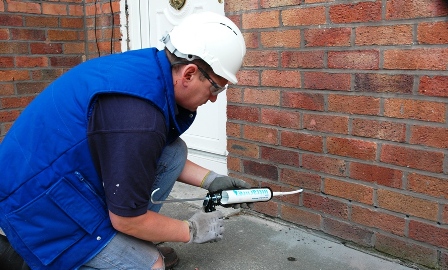Do your walls begin to leak when it rains or plumbing spillage? Is your home interior dotted with plaster despoiling and rising damps? Are there ugly patches around your windows? If your answer is yes, it means your dwelling is affected by damp, which not only ruin your home appearance but causes structural damage and creates unhealthy environment due to an imbalance of moisture in a home. The damp proofing Berkshire becomes more vital if you are residing in a flood prone area. Don’t let damage plasters, rising damps, and condensations and leaking ceiling turn your sweet home into a creepy one. There are many factors promoting dampness such as leakage, condensation, mould, excessive humidity, rain penetration and rising damps. It doesn’t matter how much you invest in optimizing your interiors unless you take care of these damp culprits. Seek professional damp proofing Berkshire if you find any of the factors like penetrating damps, rising damps and condensation at your home.
Breakthrough Damp Proofing Solutions:
- While a building in being constructed, a bedding of plastic membrane, polyethene sheeting or slate barrier is fixed into brickwork to resist an internal leakage.
- The same coursing known as Damp Proof Course or DPC, which is applied between the foundation and the base of the walls to check the rising damp.
- Surface Coating is useful to prevent water under pressure and is prepared from waterproof materials.
- Cavity Wall Construction is the creation of layering between interior and exterior walls.
You’re Role in Preventing Dampness:
Check Leakage Points and Cracks:
Cracks, defects or leaking pipes make the water getting in and cause penetrating damp. Consequently, your walls are marked with the patches and plaster spoilage. Therefore check your pipes, drainage, and gutters for any blockage (leaves, dead rats or birds and moss). Fix the cracks, loose slates and exposing joints to avoid water leakage. Apply a silicone sealant between the joining edge and bottom of your sink and backsplash to avoid water seeping.
Diagnosing the Damp Mould:
It may be the symptom of the condensation damp arising from the excessive moisture in the home. It creates condensation on meeting the cold walls and ends up in the formation of mould and an odd smell. To deal with the damp mould and wet walls, you must use extractor fans to throw out the steam while keeping the door properly shut. Moreover, use a climate control humidifier and installed correctly your home appliances as per manufacturer instructions.
Check Your Roof:
If your roof becomes wet or leaky during rainy season then check the rainwater fittings. Remove debris like leaves, stones, broken slates or other items from the draining system as they may obstruct the water flow. Replace or repair the damaged shingles by applying roof asphalt cement or adhesive.
Lime Plaster Coating:
Prefer lime plaster over renovating plasters or anti-sulphate as it promotes breathability.
Dig Away the Soil Accumulated to Your Exterior Walls:
If you see any water mark or damp patch on the footing of the wall, there is a possibility of the heap of the soil pressed against at the outer part of the wall.

